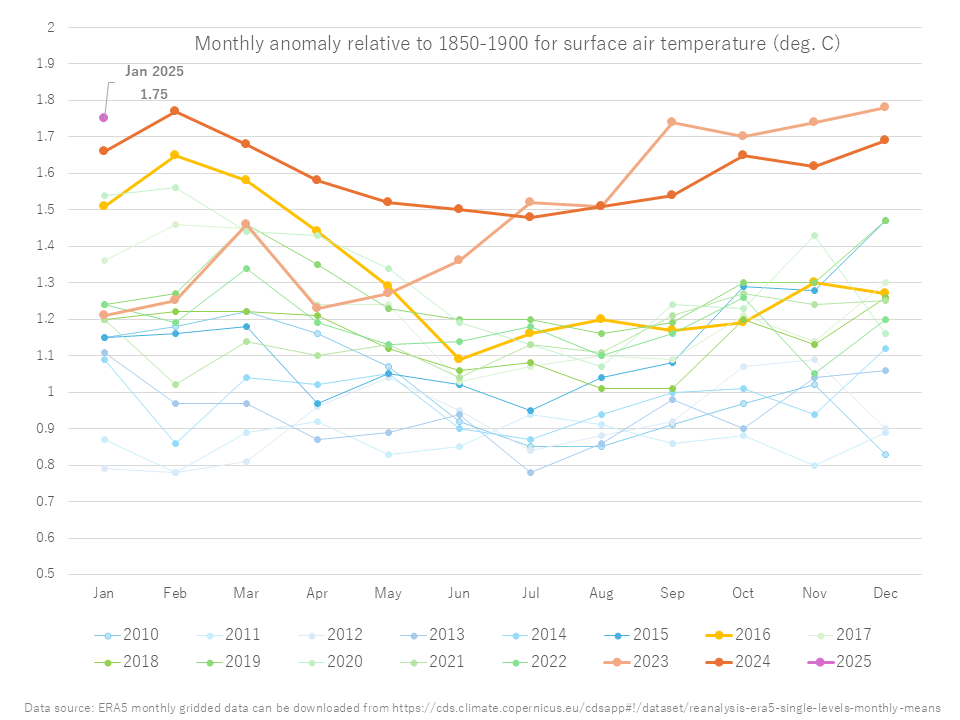Pick Up
1192. Monthly Temperatures in January 2025 were 1.75°C Higher than Pre-industrial Levels

1192. Monthly Temperatures in January 2025 were 1.75°C Higher than Pre-industrial Levels
On February 6, Europe's Copernicus Climate Change Service (C3S) announced that, despite the La Niña phenomenon, January 2025 was the warmest January on record worldwide.
January 2025 was the warmest January globally, with an average temperature of 13.23°C, 0.79°C higher than the 1991-2020 January average. This value was 1.75°C higher than pre-industrial levels, and it means that in 18 of the last 19 months, global average surface temperatures were more than 1.5°C above pre-industrial levels.
The average temperature over European land in January 2025 was 1.80°C, which is 2.51°C higher than the 1991-2020 January average, making it the second warmest January after January 2020. The areas in Europe where temperatures most exceeded the 1991-2020 average were Southern and Eastern Europe, including western Russia, were the areas in Europe . In contrast, Iceland, the UK and Ireland, northern France, and northern Fennoscandia had below-average temperatures.
Outside Europe, temperatures were significantly above average in northeastern and northwestern Canada, Alaska, and Siberia, as well as southern South America, Africa, and much of Australia and Antarctica. Below-average temperatures were observed in the easternmost parts of the United States and Russia, the Chukotka Peninsula, and the Kamchatka Peninsula, as well as the Arabian Peninsula and mainland Southeast Asia.
The mean sea surface temperature (SST) between 60°S and 60°N in January 2025 was 20.78°C, the second highest on record for the month, 0.19°C lower than the January 2024 record. SSTs were below average in the central equatorial Pacific, but near or above average in the eastern equatorial Pacific, suggesting that the transition to La Niña is slowing or halting. In many other oceans and seas, SSTs remained anomalously high.
According to experts, January 2025 was a surprising month, with record-breaking temperatures observed over the past two years despite the La Niña phenomenon in the tropical Pacific Ocean temporarily lowering global temperatures. Copernicus will continue to closely monitor ocean temperatures and their impact on the changing climate throughout 2025.
Contributor: IIYAMA Miyuki, Information Program
